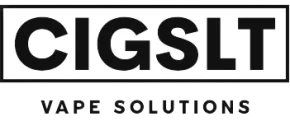As the global landscape of vaping continues to evolve, 2024 presents a pivotal year for understanding the diverse regulatory approaches being adopted worldwide. With increasing public health concerns, technological advancements, and shifting societal attitudes, countries are navigating complex terrains to formulate and enforce vaping laws. This article delves into the emerging trends shaping vaping regulations across continents, examining how different nations balance public health objectives with market freedoms. By exploring these trends, we aim to provide insight into how governments are responding to the challenges and opportunities presented by this rapidly growing industry, equipping readers with a comprehensive understanding of the current and forthcoming legal frameworks governing vaping in 2024.
Table of Contents
- Global Overview of 2024 Vaping Regulations
- Key Regional Trends in Vaping Legislation
- Public Health Implications of Emerging Vaping Laws
- Economic Impact of Vaping Policies on Global Markets
- Recommendations for Policy-Makers in Addressing Vaping Challenges
- Q&A
- Key Takeaways

Global Overview of 2024 Vaping Regulations
Across the globe, 2024 emerges as a pivotal year for vaping regulations, as countries adjust their legislative frameworks to address public health concerns and technological advancements. In Europe, France and Germany have implemented stringent advertising restrictions, focusing on reducing youth exposure by limiting digital ads and influencer promotions. Meanwhile, Italy has embarked on a groundbreaking initiative, mandating child-proof packaging to ensure safety. In the Asia-Pacific region, Australia’s newly imposed taxation measures have started influencing consumer habits as it aims to deter underage vaping. South Korea has emphasized eco-friendliness, pushing for a reduction in disposable vaping products and encouraging recyclable alternatives.
The table below outlines a snapshot of notable regulatory changes in various regions:
| Region | Country | Key Regulation |
|---|---|---|
| Europe | France | Ad Restrictions |
| Asia-Pacific | Australia | Increased Taxation |
| North America | Canada | Flavor Bans |
In North America, Canada has implemented a series of flavor bans to tackle concerns about flavored e-liquids attracting young users. On the other hand, Mexico focuses on establishing comprehensive safety standards, requiring detailed ingredient disclosures. These diversified approaches reflect a global commitment to responsible vaping practices while balancing the needs of smokers seeking safer alternatives and the potential risks of youth uptake. As 2024 unfolds, ongoing evaluations and cross-country collaborations are crucial in shaping a more harmonized regulatory landscape, aiming for robust consumer protection while accommodating innovation.

Key Regional Trends in Vaping Legislation
As we enter 2024, several regions worldwide are displaying distinct trends in vaping legislation. In North America, there is a noticeable shift towards stricter regulations, with nations like the United States focusing on limiting flavored e-liquid sales to curb youth vaping. Canada, while implementing restrictions, is also actively pursuing harm-reduction campaigns to educate the public about safer nicotine alternatives. Meanwhile, Latin American nations continue to enforce bans or stringent controls, showing a mix of zero-tolerance policies and limited legal frameworks striving to regulate the market effectively.
In Europe, countries are moving towards a unified framework to regulate vapor products under the auspices of the EU Tobacco Products Directive. However, variations remain as France leans towards softer restrictions, promoting vaping as a cessation tool, while nations like Germany take a more conservative approach, tightening advertising rules. In the Asia-Pacific region, Australia and New Zealand are at the forefront, embracing a regulatory stance that balances access and control, urging adult smokers to switch while protecting youth from potential hazards. Conversely, several Southeast Asian countries, heavily influenced by traditional tobacco industries, continue to impose strict bans or heavy restrictions on vaping.
Public Health Implications of Emerging Vaping Laws
As governments around the world scramble to address the sudden surge in vaping, the effects on public health have sparked intense debate. Some nations have adopted stringent regulations, taking cues from traditional tobacco prohibitions, while others are embracing harm reduction approaches. From flavor bans aimed at deterring young users to tax hikes intended to curb use these laws are reshaping the vaping landscape. For instance, countries like Australia have imposed prescription-only models for nicotine vaping products, aiming to balance control and access. However, critics argue that such measures might inadvertently encourage black markets, leading to unchecked health risks.
In contrast, regions like parts of Europe are implementing balanced legislation, allowing regulated sales while emphasizing public education and preventive measures. This blend of strategies is believed to reduce potential health risks while acknowledging the role of vaping in smoking cessation. Below is a summary of various global approaches:
- Australia: Prescription-only model for nicotine vapes.
- United States: Flavored e-cigarette sales restrictions.
- UK: Promotes vaping as a smoking cessation aid.
- India: Comprehensive ban on all e-cigarette sales.
| Country | Primary Focus | Health Implications |
|---|---|---|
| Australia | Prescription-based | Potential increase in illegal sales |
| USA | Flavor Ban | Reduced youth vaping |
| UK | Harm Reduction | Smoking cessation support |
| India | Complete Ban | Loss of safer alternatives |
Economic Impact of Vaping Policies on Global Markets
The fluctuating nature of vaping regulations worldwide has become a pivotal subject for global markets in 2024. Countries adopting stringent policies are witnessing a notable shift in economic dynamics as local industries scramble to adapt. Some key measures seen affecting markets include:
- Taxation Revamps: Increasing excise taxes on vaping products has led to price surges, influencing consumer behavior and potentially reducing sales volumes in regions like Europe and North America.
- Import Restrictions: Countries are tightening imports, impacting supply chains and encouraging the growth of domestic manufacturing sectors.
Contrarily, nations with a more liberal stance towards vaping are enjoying different economic benefits. Investor confidence in these regions appears to be on an upswing, encouraging capital to flow towards innovative product development initiatives. A comparative analysis reveals distinct strategies:
| Region | Regulatory Stance | Economic Impact |
|---|---|---|
| Asia-Pacific | Flexible | Investor Growth |
| Europe | Restrictive | Decreased Sales |
Recommendations for Policy-Makers in Addressing Vaping Challenges
As policy-makers grapple with the swift evolution of the vaping industry, it becomes imperative to adopt data-driven strategies that balance public health objectives with the realities of modern-day consumer behavior. Research and evidence-based regulations should be prioritized to ensure that decisions are both informed and effective. This entails establishing comprehensive frameworks that encompass not only age restrictions and advertising controls but also product safety standards and ingredient transparency. Regulators might consider collaborating with independent research bodies to continuously monitor the impact of existing rules and adjust accordingly.
International cooperation emerges as a key measure, fostering an exchange of best practices and data-sharing to tackle cross-border challenges. Beyond regulations, enacting programs that focus on education and public awareness about the potential risks associated with vaping is vital. These programs should aim to inform young consumers through school-based initiatives and community engagements. In parallel, incentives could be offered for companies investing in harm reduction technologies. To illustrate various strategic components effectively, policy-makers might find the below matrix useful:
| Strategy Area | Recommendations |
|---|---|
| Research and Regulations | Prioritize evidence-based approaches; Collaborate with research bodies |
| International Cooperation | Facilitate data-sharing; Exchange best practices |
| Education and Awareness | Implement school programs; Promote community awareness |
| Industry Incentives | Encourage harm reduction technologies; Offer development grants |
Q&A
Q&A: Exploring 2024’s Worldwide Vaping Law Trends
Q1: What are the main global trends in vaping laws for 2024?
A1: In 2024, the global trends in vaping laws continue to focus on balancing public health concerns with individual rights. Key trends include stricter advertising restrictions, age limits for purchasing vape products, and flavor bans. Countries are also increasingly requiring health warnings on packaging and consider taxes similar to those imposed on traditional tobacco products. Additionally, there is a trend towards regulation of e-cigarette quality standards to ensure product safety.
Q2: How are different regions approaching vaping regulations in 2024?
A2: Approaches to vaping regulations vary significantly across regions. In North America, there is a strong emphasis on protecting youth, with enhanced advertising restrictions and age verification systems. European countries continue harmonizing their laws through the EU Tobacco Products Directive, focusing on standardizing ingredients and emissions. In Asia, nations like India and Thailand maintain strict prohibitions, whereas countries like Japan allow certain forms of vaping under regulated conditions. Latin America sees a mixture of strict and lenient approaches, reflecting diverse public health priorities and market conditions.
Q3: What impact do these vaping laws have on public health and safety?
A3: Vaping laws aim to minimize health risks associated with e-cigarette use, particularly among young people and non-smokers. By implementing age restrictions and flavor bans, these laws seek to reduce the appeal of vaping to minors. Quality control regulations enhance product safety by minimizing harmful substances in e-liquids. However, critics argue that overly restrictive laws might push users towards unregulated black markets, potentially harming public health more than helping it.
Q4: Are there any significant changes expected in vaping taxation policies in 2024?
A4: Yes, significant changes in vaping taxation policies are expected in several countries in 2024. Governments are increasingly viewing e-cigarettes as a potential revenue source, similar to traditional tobacco products. This trend towards higher taxes aims to discourage usage, particularly among price-sensitive demographics like youth. Nevertheless, the level of taxation varies, reflecting different regulatory philosophies and economic considerations across jurisdictions.
Q5: How do consumer rights factor into the discussion on vaping regulations?
A5: Consumer rights play a crucial role in discussions on vaping regulations. Advocates argue for transparency in labeling and information about the health risks associated with vaping products. Additionally, there are calls for maintaining a balance between regulation and freedom of choice for adult consumers. These rights are considered in the context of ensuring that laws do not overly restrict access to vaping products for adults while safeguarding public health.
Q6: What are the challenges faced by policymakers in implementing vaping laws?
A6: Policymakers face several challenges in implementing vaping laws. Ensuring compliance across diverse and rapidly evolving markets is complex, as is addressing the cross-border nature of e-commerce in vape products. Balancing economic interests, such as those of vape manufacturers and retailers, with public health goals, is another significant challenge. Additionally, keeping regulations up-to-date with emerging scientific evidence on vaping’s health impacts presents an ongoing difficulty.
Q7: How might these trends influence the future landscape of the vaping industry?
A7: These trends are likely to shape a more regulated and standardized vaping industry. Companies may need to invest more in compliance, research, and development to meet stringent regulatory standards. The focus on safety and transparency will likely drive innovation towards safer products and technologies. Furthermore, the industry might see consolidation as smaller players struggle to keep up with the regulatory demands. These dynamics could lead to a more mature and stable market, albeit one with potentially higher barriers to entry.
Key Takeaways
the landscape of worldwide vaping laws in 2024 presents a dynamic and evolving picture. As governments across the globe attempt to strike a balance between public health concerns and the interests of adult consumers, legislative approaches continue to vary significantly. Enhanced regulations and outright bans in some regions contrast with efforts to integrate vaping into broader harm reduction strategies in others. These disparate trends underscore the complexity of making policy decisions that consider both scientific research and societal impacts. As we move forward, it remains critical for policymakers, health professionals, and industry stakeholders to engage in ongoing dialog and collaboration. By doing so, they can work toward developing informed, comprehensive strategies that protect public health while respecting individual choice. As this issue continues to evolve, close monitoring and adaptive strategies will be key in navigating the future of vaping regulation.














